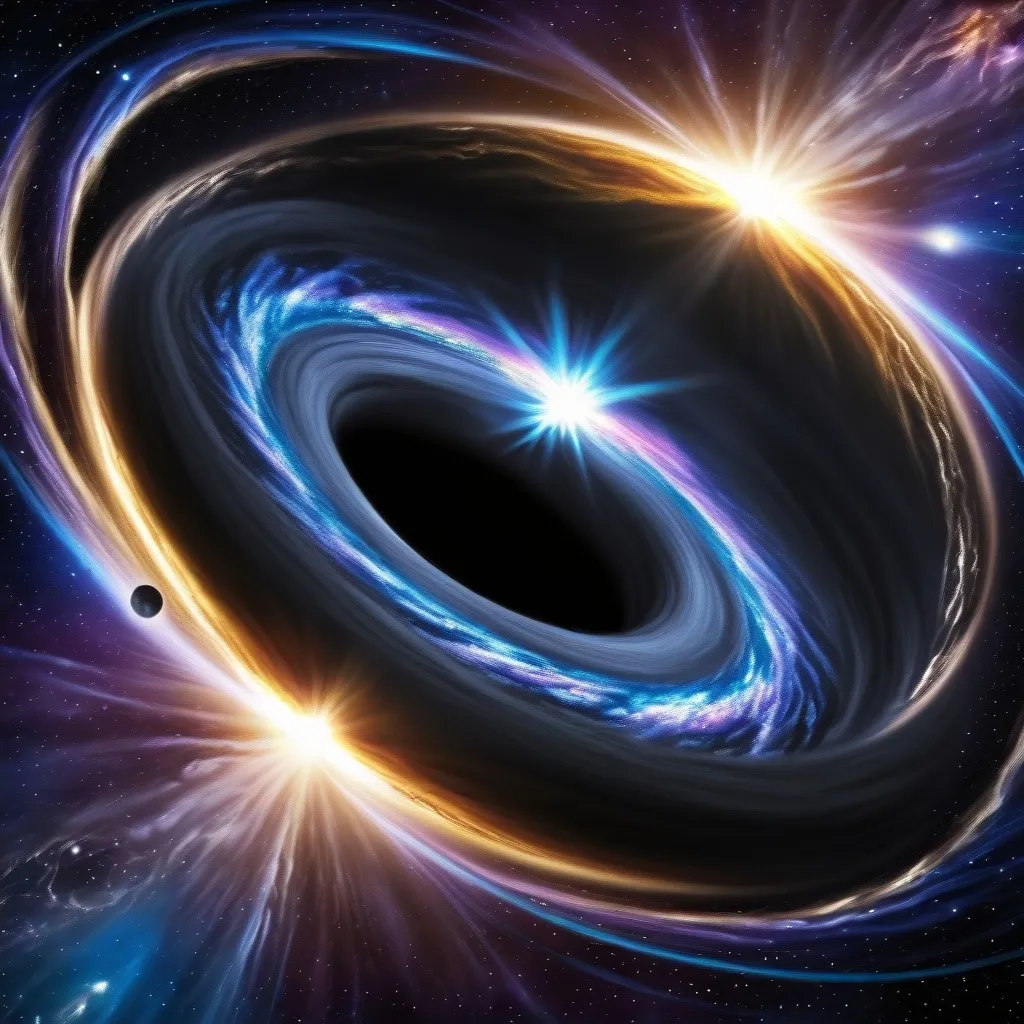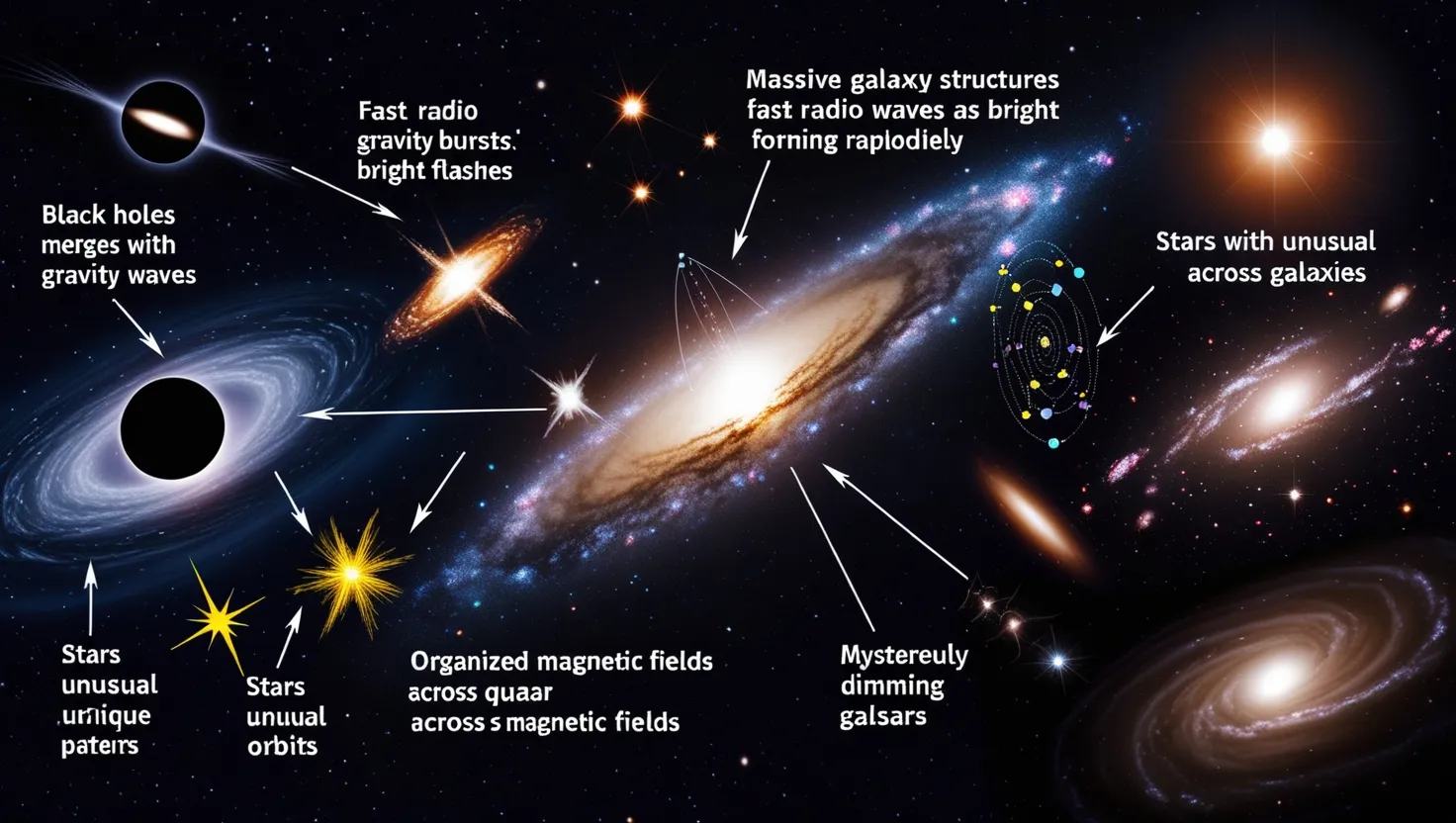Imagine stepping into a space where, right before your eyes, a mesmerizing 3D image of a DNA molecule floats ethereally in mid-air. It’s no visual trickery; it’s the marvel of a hologram, essentially a two-dimensional canvas that cleverly projects a 3D spectacle. Now, what if this wild concept wasn’t just limited to a tech demo, but scaled up to encompass the entire universe? This isn’t a page out of a sci-fi novel. It’s an actual, scientific hypothesis that’s been stirring the minds of physicists for years, known simply as the holographic principle.
Picture our daily lives, where everything unfolds in a trio of dimensions we merrily call space and the ceaseless march of time. But here’s the kicker: the holographic principle challenges this view, proposing that our seemingly three-dimensional reality is actually an illusion. At its core, the universe might just be two-dimensional, with every detail we’ve ever perceived etched on this flat tapestry.
Think of it like a CD. Sure, it looks like a simple two-dimensional disc, but it’s the keeper of all the intricate sound data needed to play your favorite tunes. This is what the holographic principle suggests – that every nitty-gritty of our universe is inscribed on a flat, two-dimensional surface, not unlike how data on a CD brings vibrant music to life. This includes everything from objects’ positions to their speeds, which form the very bedrock of how we experience reality.
One of the fascinating insights supporting this idea comes from something called the AdS/CFT duality, introduced by physicist Juan Maldacena. This duality paints a picture where a five-dimensional world, governed by the pull of gravity in a strange, curved arena called anti-de Sitter space (AdS for short), can also be narrated by a humbler four-dimensional theory devoid of gravity. In simpler words, imagine two seemingly different theories dancing around one physical truth – one with, and one without the stardust of gravity.
Now, let’s blow that up to a larger-than-life scenario. Envision a universe sprawling across five dimensions, where gravity runs the show. Now, throw in another universe that’s running parallel, except it’s running in four dimensions and has given gravity the boot. Sounds like a brain teaser, right? Yet, that’s exactly the paradox the AdS/CFT duality presents. It’s like saying all the happenings on the surface of a grand object can be the blueprint for understanding the whole shebang inside, gravity included.
If we dare entertain the thought of our universe as a hologram, it teases profound implications. Imagine everything seen, felt, or experienced is just a curtain call from a lower-dimensional stage. It packs potential solutions to some of physics’ head-scratchers, places where quantum mechanics and general relativity just can’t seem to play nice. These two theories act as our guides through very different realms, and the holographic principle hands us a possible way to unite them, maybe even help them bury the hatchet.
However, it’s far from straightforward to prove this enthralling concept. Our universe hasn’t exactly rolled out the red carpet for the conditions required by the AdS/CFT duality, like having a negative, curveball nature and four visible spatial dimensions. Instead, our cosmic sandbox appears pretty flat and has matter sprinkled liberally all over. This makes directly applying the holographic principle to our reality a bit of a head-scratcher.
Despite these hurdles, science keeps chasing the sparkle of the holographic principle, pulling me back to the realm of possibilities. The notion that our universe could be mirrored on a smaller, simpler dimension is just too compelling to toss aside. Should we manage to tune the AdS/CFT duality to our cosmic beat, it could open the door to a singular, comprehensive theory of quantum gravity – something that has kept the scientific world in suspense for quite a while.
Picture for a moment having a universal manual, decrypting everything from the quirky dance of atoms to the grandiose stretch of the cosmos. That’s the tantalizing promise the holographic theory dangles before us – a crossroads where quantum mechanics shakes hands with general relativity. It’s a thought so inviting it propels physicists forward, even when the path feels speculative and misty.
While draped in the abstract, this principle has already carved a niche in physics arenas. In territory marked by electromagnetism and gravity, unraveling the traits coded on a boundary can shed light on the bigger picture. For instance, poking into how particles behave on a black hole’s surface can whisper secrets about what’s tucked inside – secrets we’d otherwise slam into dead ends to uncover.
Yet, when dreaming of stretching this principle across our whole universe, heavy challenges loom on the horizon. String theory nudges towards a landscape with at least ten dimensions, but squishing them neatly to reflect what we observe? That’s a puzzle wrapped in a conundrum. Even so, the holographic principle keeps sparking fresh quests and theoretical blueprints.
Here’s a simpler way to relate: think of watching a movie. To us, it unwraps as a vivid three-dimensional world where characters romp and roam, yet it’s genuinely just a flat projection playing across a two-dimensional screen. In like fashion, the holographic principle suggests our three-dimensional escapades could be mere reflections from a two-dimensional realm.
This thought can feel like both a dazzle and a daze. If our universe is indeed a hologram, decoding reality turns into an intriguing pursuit. It nudges us to reframe our grasp of space, of time, and everything we’ve trusted. Yet, it also peels back a fresh perspective on the universe, one promising a breakthrough in cosmic understanding.
The voyagers of holographic research carry on, ever determined to stretch the AdS/CFT duality’s arms into more realistic models of our universe. Crafting novel mathematical scaffolds to capture our universe’s sprawling, flat spacetime is key. Though it remains a clouded endeavor, optimism sits high on the scientific horizon, carrying whispers of a possible groundbreaking discovery.
Such a revelation would rewrite the books. If the universe truly pulses as a hologram, it could blow open one of the most pivotal paradigm shifts since quantum mechanics and general relativity surfaced. It would profoundly tweak our take on space, time, and the core of existence itself.
The mere notion of our universe as a hologram casts a captivating spell over physicists and daydreamers alike. While still wrapped in a speculative veil, it supplies a robust scaffold to reinterpret the universe through a brand-new lens. Scientists persist, steering research towards the beacon of a unifying theory that could unveil answers stretching from the minute details of particle behavior to the mighty expanse of the cosmos.
Whether the universe stands as holographic or not, the journey of unpacking this concept fuels significant strides in astrophysical knowledge. This odyssey demands a rethink of reality, sparks fresh ideations, and reminds us of the complex, stunning weave that forms our cosmos.






